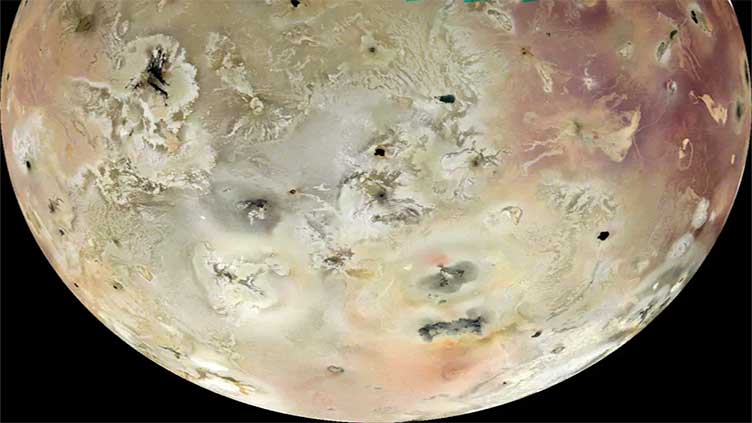Images of Jupiter's volcanic moon lo captured by Nasa's Juno mission

Technology
Stunning images of the most volcanic world in our solar system
(Web Desk) - Nasa’s Juno mission passed within 930 miles of Jupiter’s volcanic third largest moon lo, capturing stunning images of the most volcanic world in our solar system.
The spacecraft, in the third year of its mission to chronicle the massive planet and its up-to-95 officially recognized moons, photographed active volcanoes blasting huge plumes of debris into its very thin sulfur dioxide atmosphere.
The breathtaking images of the heavily cratered moon and its hundreds of volcanos and lava lakes can be seen in a gallery published in Sky & Telescope.
Juno — the first solar-powered mission in the outer solar system — had made a similar close approach to the innermost Galilean moon in December, and its latest pass came on its 58th circle of the massive planet, during which it had captured the first-ever images of lo’s north and south poles, NASA said.
“By combining data from this flyby with our previous observations, the Juno science team is studying how Io’s volcanoes vary,” Juno’s principal investigator Scott Bolton of the Southwest Research Institute in San Antonio said in a NASA press release last month.
“We are looking for how often they erupt, how bright and hot they are, how the shape of the lava flow changes, and how Io’s activity is connected to the flow of charged particles in Jupiter’s magnetosphere.”
Scientists were also observing the “importance of tidal forces from Jupiter, which are relentlessly squeezing this tortured moon,” Bolton said.
The spacecraft’s JunoCam suffered radiation exposure during its last close pass of the planet, which was doctored by engineers who used internal heaters on the camera to warm it up.
lo is slightly larger than Earth’s moon, and features surface temperatures of negative 202 degrees, but its interior is warmed by the tidal forces of Jupiter’s huge gravitational field, fueling volcanos that can exceed 3,000 degrees, according to Space.com.
Its volcanos spew charged particles into a region of higher concentration of ions and electrons located at Io’s orbit Io plasma torus, which connects back to the planet through magnetic field lines.
The celestial body orbits Jupiter in less than two Earth days but does not rotate, because it is tidally locked to the planet.
Juno’s latest passes was not the closest spacecraft have ever been to lo — the Galileo mission reportedly got within 112 miles of the moon in 2001.



